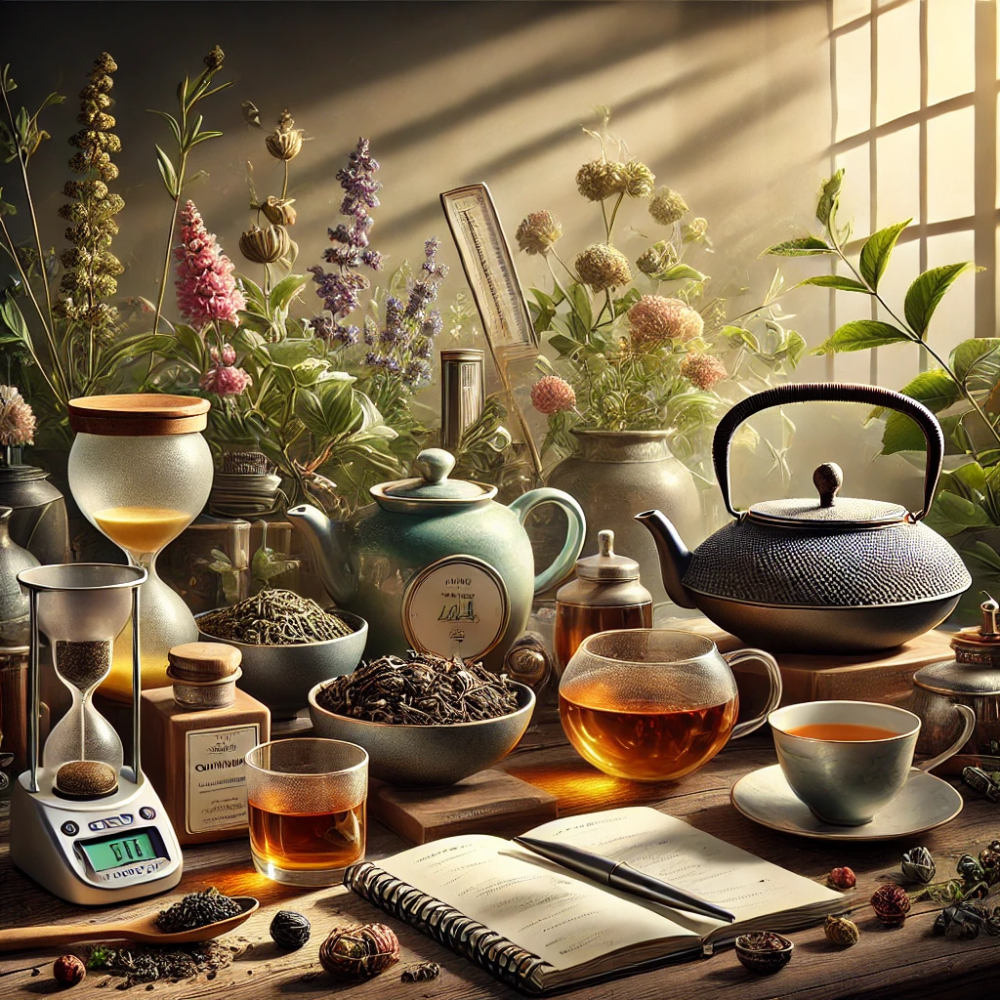If you are new to the world of specialty tea, it might seem diverse and complex. With so many types, flavors, and preparation methods, it can be hard to know where to start. This guide is designed for beginners who want to enter the world of specialty tea and enjoy a rich and varied experience. We will offer tips and guidance on how to choose the right tea, essential preparation tools, understanding flavors, developing your palate, and resources for further learning and exploration.
1. Understanding the Basics of Specialty Tea
What is Specialty Tea?
- Definition: Specialty tea is high-quality tea produced in limited quantities, focusing on quality and craftsmanship at every stage of cultivation and processing.
- Characteristics:
- Originates from specific regions or individual farms.
- Features unique and complex flavors.
- Often harvested and processed by hand.
2. How to Choose the Right Tea
A. Identifying Your Personal Preferences
- Flavors: Do you prefer floral, fruity, herbal, or smoky notes?
- Caffeine: Do you want caffeinated or caffeine-free tea?
- Type: Start with basic types like green, black, white, oolong, and pu-erh tea.
B. Start with Samples and Experiments
- Buy Small Samples: Look for shops that sell small tea samples to try different types without major commitment.
- Monthly Subscriptions: Subscribe to tea boxes that send various teas each month.
C. Look for Quality
- Appearance: Leaves should be whole and clean.
- Aroma: Should be aromatic and pleasant.
- Source: Choose tea from reputable and known sources.
3. Essential Tools for Tea Preparation
A. Teapot or Gaiwan
- Teapot: Suitable for brewing larger quantities.
- Gaiwan: A traditional Chinese vessel ideal for multiple infusions and small quantities.
B. Tea Cups
- Ceramic or glass cups help you enjoy the color and aroma of tea.
C. Tea Strainer
- Used to remove leaves after steeping, especially when using loose leaf tea.
D. Thermometer and Digital Scale
- For controlling water temperature and accurately measuring tea amounts.
4. Understanding Flavors and Developing Your Palate
A. Observing Sensory Elements
- Aroma: Smell the tea before tasting to explore different scents.
- Taste: Notice basic flavors like sweetness, bitterness, and acidity.
- Texture: Pay attention to the mouthfeel — whether it’s smooth, creamy, or astringent.
B. Taking Notes
- Keep a journal to record your experiences with each tea type, helping identify your preferences.
C. Comparing Different Types
- Taste different teas side-by-side to compare flavors and characteristics.
5. Tips for Brewing the Perfect Cup
A. Use Pure Water
- Filtered or spring water is preferred for the best flavor.
B. Control Water Temperature
- Green and White Tea: 70–80°C
- Oolong Tea: 85–95°C
- Black and Pu-erh Tea: 95–100°C
C. Adjust Steeping Time
- Follow specific instructions for each type, generally between 2–5 minutes.
D. Use the Right Amount
- Typically 2 grams of tea per 100 ml of water, but adjust to taste.
6. Resources for Learning and Further Exploration
A. Books and References
- "The Tea Enthusiast's Handbook"
- "The Story of Tea: A Cultural History and Drinking Guide"
B. Courses and Workshops
- Look for local or online courses on tea tasting and preparation.
C. Communities and Forums
- Join online tea communities to share experiences and learn from others.
D. Visit Tea Houses and Specialty Shops
- Tasting tea in a specialty environment offers opportunities to discover new types and learn from experts.
Conclusion
Entering the world of specialty tea is an enjoyable journey combining tasting, learning, and exploring. By understanding the basics, choosing the right tools, and developing your palate, you can enjoy a rich and varied tea experience. Don’t hesitate to try new types and engage with the tea community to expand your knowledge and enjoyment with every cup.
Also Explore:
- Specialty Tea: The Ultimate Tasting Experience
- Understanding Specialty Tea: A Journey into Unique Flavors
- Beginner’s Guide to Specialty Tea
- Detailed Analysis of Famous Specialty Tea Types
- Health and Wellness Benefits of Specialty Tea
- The Art of Brewing Specialty Tea: Techniques and Methods
- Specialty Tea and Cooking: Innovative Culinary Uses
- Specialty Tea and Sustainability: Eco-Friendly Practices
- Modern Innovations in the World of Specialty Tea
- Specialty Tea and World Cultures: Traditions and Rituals
- Specialty Tea as a Symbol of Art and Beauty
- Specialty Tea and Tourism: A Journey through Global Tea Cultures
- Specialty Tea and E-Commerce: How the Internet is Changing Tea Consumption
- Specialty Tea and Global Travel: Experience Tea Cultures Around the World
Special Addition: Discover the Excellence of Dilmah in Specialty Tea
When speaking of specialty tea and its exceptional quality, we must mention Dilmah, a brand that has become synonymous with excellence in the tea world. Founded by Merrill J. Fernando, Dilmah was created to deliver the finest tea from Sri Lanka to tea lovers worldwide.
Why Choose Dilmah?
- Unmatched Quality: Dilmah offers pure, sustainably grown tea with a focus on preserving the natural, authentic flavors of the tea leaves.
- From Farm to Cup: Dilmah ensures close monitoring of every step in the production process — from cultivation to packaging — guaranteeing an unforgettable tea experience.
- Commitment to Sustainability: Dilmah supports local communities and environmentally friendly farming practices, making your choice of Dilmah tea a step toward sustainable development.
The Dilmah Tea Experience:
Whether you love classic black tea or want to explore new green and herbal flavors, Dilmah offers a wide variety that suits all tastes. Join millions around the world who have made Dilmah tea a part of their daily routine and enjoy genuine excellence with every cup.
Choosing Dilmah means choosing excellence, quality, and sustainability. Try it today and experience the difference yourself!

